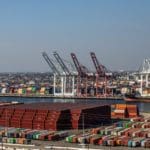Global Trade Compliance (GTC) solutions automate and streamline processes related to customs and regulatory compliance. GTC solutions automate the discovery, creation, retention, analysis, and communication of information about international supply chains that is of importance to customs and other government authorities responsible for regulation and taxation of cross-border trade. These solutions also enable companies to make optimal decisions with respect to the impact of customs and compliance on business operations.
GTC solutions support communications with international government authorities regarding:
Duties, tariffs, and preferential treatment requirements placed by governments on international trade and commerce
Non-financial trade regulations issues, such as restricted parties, government licensing of export rights for controlled items, and other regulations Global Trade Management Solutions can help with:
Obeying these Laws is Not Easy
Following the letter of the law is important. Violating trade regulations can result in large fines, revocation of export privileges, and even criminal prosecution. Fines for flagrant restricted party violations can run into the millions of dollars. Goods that are incorrectly classified can be held up at the border, impacting service levels to customers.
But paying the right tariffs is far from simple. Key drivers for this market are the sheer complexity associated with complying with global trade regulations and a desire to source and export in a manner that lowers tariffs.
The Harmonized System of commodity classification, known as HS code verification, is a commodity description and coding system upon which all goods are identified by customs authorities. It is used by customs agencies worldwide. Using the right HS codes allows companies to pay the correct tariffs. The difficulty in correctly classifying goods is linked to the fact that there is often a large difference between how products are described commercially and how they are expressed in the HS codes. Further, every country or trading bloc has its own taxonomy once companies get past the first six digits. The first six digits are standardized internationally depending on the type of goods or service.
HS codes are non-intuitive. Trade compliance officers must learn to speak a specialized jargon often incomprehensible to outsiders. What a regular person might call “baby food,” for example, a trade compliance person would describe as “homogenized composite food preparation.” A hair dryer is an “electrothermic hair dressing apparatus;” before you can classify rayon, you must know whether it is an “artificial” or a “synthetic” fiber. An automotive part, like a car alarm, would be listed in the section of the automotive section of the HS tables. It is not. It is an “electronic signaling device.”
In addition to properly classifying goods, a trade department needs to understand preferential trade agreements, foreign trade zones, and duty drawbacks. A preferential trade agreement is a trading bloc that gives preferential access to certain products from the participating countries. This is done by reducing tariffs but not by abolishing them completely. A preferential trade agreement can be established through a trade pact. To get the preferential duty, a company may be subject to local content rules that stipulate that some percentage of the value of the product must be produced through local assembly or the use of locally produced goods.
But Emerging GTC Laws are Even more Burdensome
The argument that GTC is strategic is becoming more prevalent. Five years ago, or so, trade compliance would often report up to the Chief Legal Officer. Today, the trade compliance function might roll up to quality, logistics, supply chain, or even to the Chief Sustainability Officer. Companies are moving from a narrow lens on trade compliance as a department that ensures the company is following “the letter of the law,” to a broader view of compliance as being part of a function that supports broader risk, image, and reputational considerations.
Across the globe, countries are implementing stricter trade regulations, causing an influx of protectionism and modernized trade enforcement. The effects of these decisions continue across the importers and exporters of the world. In 2022, the Uyghur Forced Labor Prevention Act came into effect. The UFLPA is one of the strictest supply chain laws on forced labor. In a broad overview, the law prohibits any goods mined, produced, or manufactured wholly or in part in Xinjiang or by an entity on the UFLPA Entity List from U.S. importation. If a company has affiliations with this type of labor practice in its supply chain, it is up to US Customs and Border Protection to flag these products and stop them from entering the country. A GTC tool in this situation can identify and flag potential links to forced labor in a company’s supply chain before products are stopped at the border.
An approaching supply chain governance law in the EU is making its way through the complex process of being approved. The Corporate Sustainability Due Diligence Directive (CSDD), a piece of legislation aimed at mitigating negative human and environmental impacts across a company’s value chain. The directive will push companies to review and report the finding of their entire value chain for any risks related to human or environmental impacts. Additionally, it is highly encouraged for business-to-business reconciliation instead of dropping one another. This approach of governing supply chains through multi enterprise reporting is the first of its kind bill and is far more difficult than traditional HTS compliance. This is the new age of supply chain compliance that will hold businesses to a new standard of operating and increased the demand for GTC solutions exponentially.
The post Global Trade Compliance (GTC): A Beginner’s Guide appeared first on Logistics Viewpoints.
